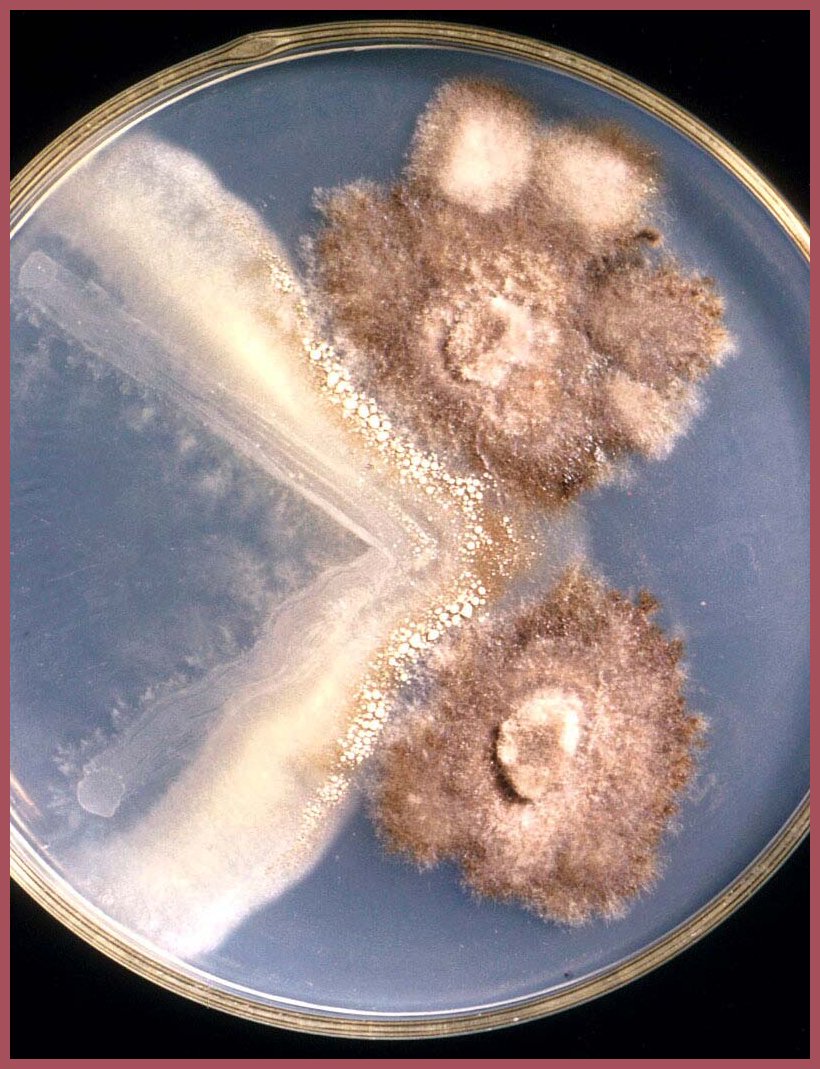

Microorganisms - Insects infest. Microorganisms infect. An organism of microscopic size. Bacteria, the tree pathogens, may be as small as 3 microns wide by 5 microns long. A micron is a thousandth of a millimeter, which is a thousandth of a meter, which is about 39 inches. A microscope is required to see bacteria. Fungi are also microorganisms. Their microscopic cells are often joined to form long tubes. As small as some fungi are, their fruit bodies may be very large. Some perennial, hard "woody" fruit bodies of some fungi weigh over 20 pounds. Hardly a microorganism! Other microorganisms that inhabit trees are viruses, mycoplasmas, slime molds, and protozoa. We know very little about the blue-green algae that are in the size range of bacteria. The blue-green algae have been found in fungus fruit bodies. This is important because some blue-green algae can fix nitrogen from the air into nitrates. Other small organisms that live in, on, and about trees are the microscopic roundworms, the nematodes, and the amoebae. Blue-green algae are really cyanobacteria. Picture on left is a fungus with its fruiting body.
Basically, microorganisms alter wood six ways: white rot, brown rot, discolored wood, wetwood, soft rot, and pit erosion.
White rot - cellulose and lignin digested. Brown rot - cellulose digested, lignin altered. Discolored wood - cell contents and walls altered, color change. Wetwood - cell contents and walls altered by anaerobes mostly, not always a color change. Soft rot - cell walls eroded with distinct patterns. Pit erosion - pits selectively digested, mostly in ponded logs.
Click here for more words on
bacteria.
Click here for more
words on fungi.
A must read is - Chapter 4 on "Trees and Microorganisms" in
A NEW TREE BIOLOGY.
[For top quality pictures see
SHIGO 2002 CD's]
Dictionary MAIN
PAGE
Text & Graphics Copyright © 2007
Keslick & Son Modern Arboriculture
Please report web site problems, comments and words of interest,
not found.
Contact